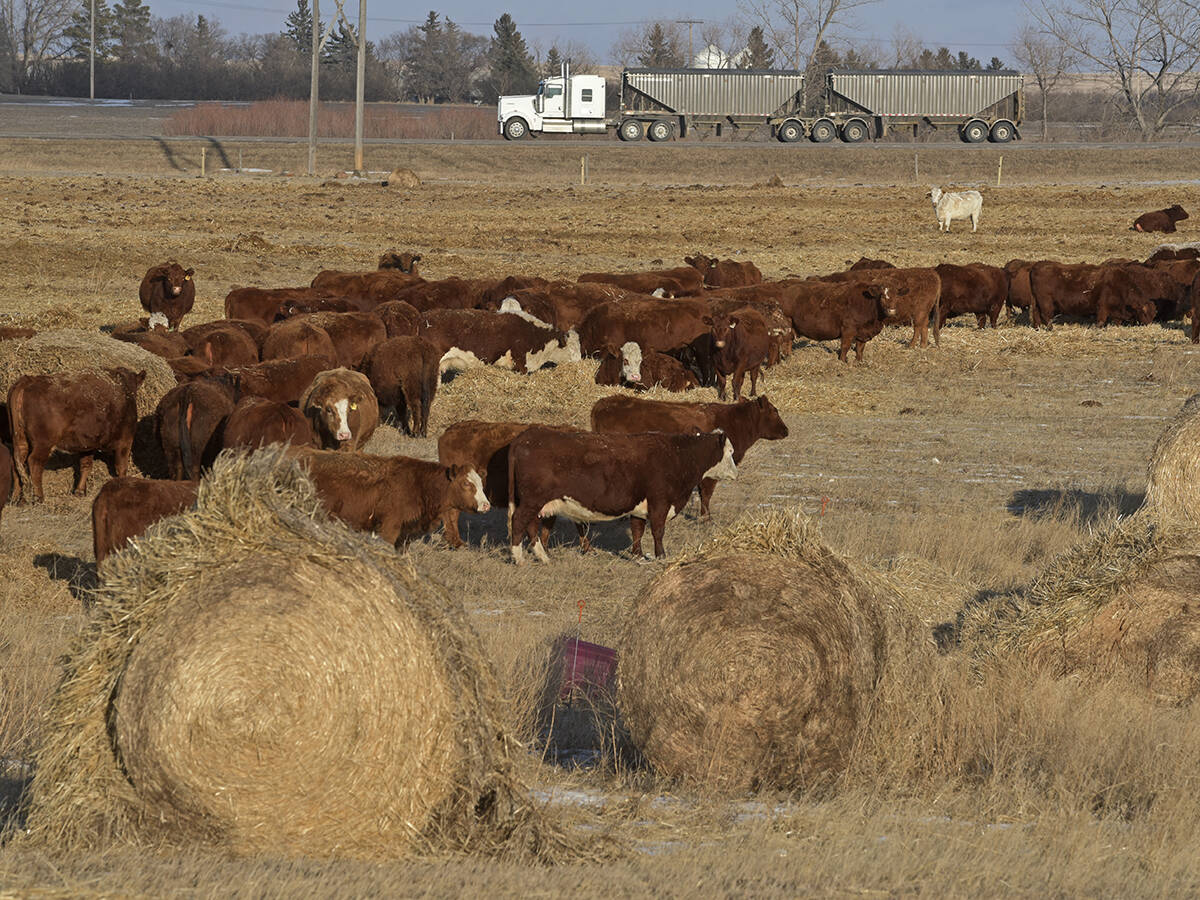Peritonitis refers to the inflammation or infection around the peritoneum, which is the inside lining of the abdomen.
Any infection involving the abdomen is described as peritonitis.
It could be infection around the intestines, stomachs, liver or uterus in cows and heifers.
There are many causes of peritonitis and if a veterinarian can diagnose it and determine the cause, it may be possible to prevent future infections.
Some cases aren’t preventable but at least producers can take comfort in the knowledge there was nothing that could have been done.
Read Also

Canadian Cattle Association hopeful of agreement with Alberta group
The Canadian Cattle Association is optimistic the two parties will work through the issues ABP identified and resolve them before the July 1, 2026, withdrawal date.
Increased temperature, depression and grunting from a painful abdomen are common signs of peritonitis.
To help make a diagnosis, veterinarians may take blood for a blood count and check fibrinogen levels, which are an indication that inflammatory material is collecting in the abdomen.
Because the abdomen is painful on palpation, a veterinarian might do a grunt test with a withers pinch.
Hardware disease is a common form of peritonitis. This is caused by something sharp, usually metal, penetrating though the reticulum (first stomach), causing the contents to leak out and cause infection. This might also involve infection around the heart.
Vets might in certain circumstances advise putting magnets in the cattle. The magnets stay in the reticulum for the life of the animal and ferrous compounds stick to the magnet, preventing it from penetrating through the first stomach.
Magnets have become less expensive and the good ones are strong.
Hardware disease can be a reoccurring problem in intense feeder operations and dairies, where lots of equipment is used and metal can get into the silage.
If caught early, a veterinarian might prescribe anti-inflammatory drugs and antibiotics.
Several other types of acute diffuse peritonitis result in a sudden death, occurring over one or two days. Autopsies on these animals may provide usable information.
In many cases, post-mortems can be done under the BSE testing program, as long as the animal is older than 30 months and meets other criteria.
A post-mortem is critical to help determine the exact cause of the peritonitis.
Sometimes the medical history may indicate the source, such as a hard calving or head back or breech birth that was corrected. These problems may lead to a torn uterus, allowing placenta and uterine contents to leak into the abdomen.
In major infections, the whole abdomen may be infected and it might be difficult for the attending veterinarian to determine the initial cause of the infection.
Cattle have an amazing ability to wall off the infection and minimize its spread. That is why they can survive more abdominal infection than any other species. This is why caesarean sections can be performed in barns with good results, as long as some degree of hygiene is followed.
Other causes of peritonitis include rupture of abscesses on the liver or a traumatic breeding by a large aggressive bull rupturing the vagina of a heifer.
Grain overloads can lead to peritonitis, especially around the rumen.
Birthing can also cause problems.
The rectum may rupture at calving or another phenomena, called the scissor effect, might occur if the cow’s small intestine gets trapped between the pelvis and uterus. This happens more following instances of backward calving. As the calf is expelled, the pressure on the intestines creates a cut from the cow’s pelvis. Ingesta is spilled out internally and the cow usually dies within 24 to 36 hours. These can happen from a pull or even when a cow calves naturally.
A post-mortem in this case identifies the problem and rules out other sudden death causes, such as blackleg or grass tetany, which can be prevented.
Twice in my long career I have had the rectum rip clear through from palpating. The resulting peritonitis would have killed the animals but in one instance, I had the heifer emergency slaughtered. In the other instance, I was able to suture the tear.
This is why it is necessary to check the uterus to make sure there are no tears following tough calvings or when mal-presentations are corrected.
Producers who discover a tear should call a veterinarian, who might be able to suture it and save the cow.
Some products for the treatment of milk fever and other metabolic disorders are approved for intraperitoneal use (injection into the body cavity) but many are not, so be careful.
If delivering products this way make sure the needle is new and the injection is given through a clean area.
There once was a rumen injector for delivering a deworming product directly into the rumen. It was soon pulled because it was causing peritonitis. This could be an infectious process or a chemical peritonitis from the sensitive internal organs’ reaction to the product. Either way, it led to a sick animal.
Think twice about injecting anything into the abdomen unless advised by a veterinarian. The newest trend in pregnancy testing is using an ultrasound with an introducer.
Veterinarians must use lots of lubricant on these and introduce it carefully if the cows have dry manure. I have heard of two instances where the introducer perforated the colon, which killed the cow.
The veterinarian had no idea this had happened.
If after handling, processing or pregnancy checking cows suddenly die, it is good to get a post-mortem to identify if an injury occurred during processing. This might prevent it happening in the future.
Peritonitis in young calves can result from such things as perforated abomasal ulcers, blocked intestines and navel infections gone internal. Keep these in mind when dealing with sick calves. There are methods to prevent navel infections and surgery may correct the other two problems if caught early.
Work with a veterinarian by getting post-mortems carried out on unexplained cattle deaths. Many of these deaths can be reduced, or the post-mortem may unearth an unexpected disease.














